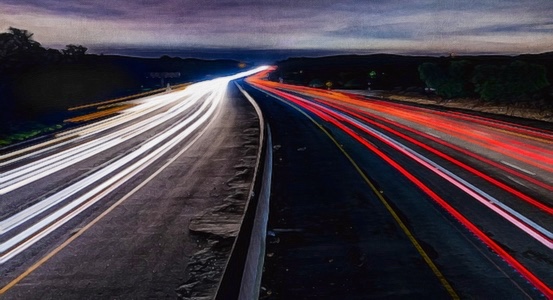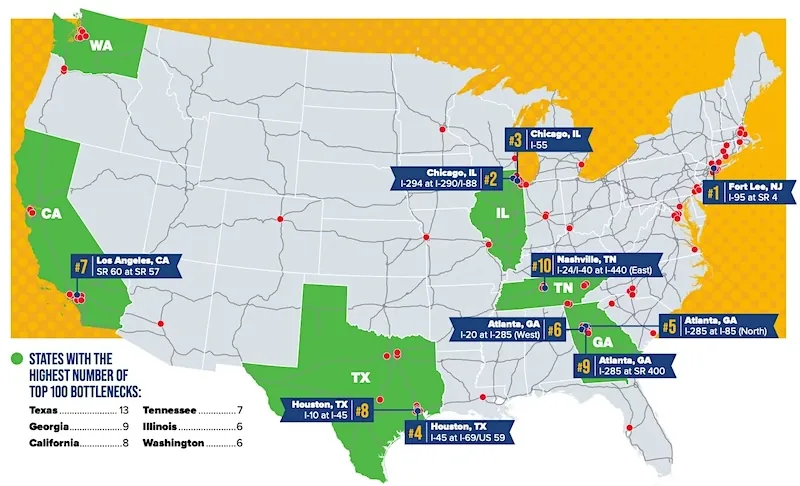
Transportation Life Lessons: 2024 Edition
February 15, 2024
Commercial Vehicle Blitz
February 29, 2024The Flow of Things

(Eventually) Gonna Be a Bright Sun Shiny Day
We’ve all been there and (not) done that: stuck in a line of vehicles, idling, and we’re late. Our GPS might tell us something like: “Even though this seems slow as molasses in January, this is still the quickest route.”
The American Transportation Research Institute (ATRI) has just released its annual list of Top 100 Bottlenecks on the nation’s roads.
Says ATA President and CEO Chris Spear:
“Traffic congestion on our national highway system inflicts an enormous cost on the supply chain and environment, adding $95 billion to the cost of freight transportation and generating 69 million metric tons of excess carbon emissions every year.”
The ATA report, says Spear, provides “an actionable blueprint for state and federal transportation officials on where to invest infrastructure funding most cost-effectively.”
The Infrastructure Bill has created funding and employment to address these problems. Yes, and then federal, state, and local bureaucracies crawl in, often creating its own interesting and vexing version of a bottleneck, this one involving paperwork and regulation.
Eventually, though, we usually get there, “there” being to our destination.
In the meantime, the bottleneck congestion Top Five:
-
Fort Lee, NJ: I-95 at SR 4 (average speed of 27.1 mph)
-
Chicago, IL: I-294 at I-290/I-88 (42.8 mph)
-
Chicago, IL: I-55 (35.3 mph)
-
Houston, TX: I-45 at I-69/US 59 (30.4 mph)
-
Atlanta, GA: I-285 at I-85 (North): 36.6 mph)
Or, as Truckers News puts it: “Once again, going from New Jersey into New York City remains one of the most difficult things a professional driver can do.” (And we thought the most difficult thing a driver could do was win a race against Max Verstappen.)
The stretch with the lowest peak average speed is I-495 in Queens, New York, at 15.6 mph. At that speed, you might be tempted to walk, if it weren’t for that three-ton piece of industrial equipment strapped to your flatbed.
Sense of urgency here?

Source: ATRI
